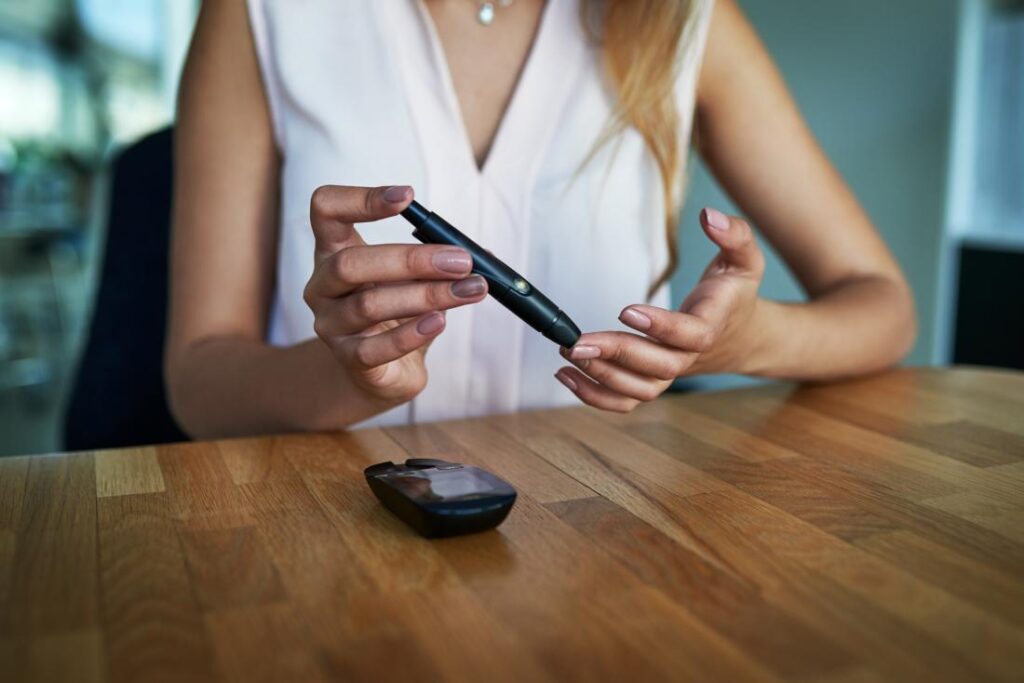- This post will talk about what fasting blood sugar level means. Diabetes is a disease in which the body can’t make or respond to the hormone insulin as well as it should. People with type 1 diabetes have a pancreas that only makes insulin, not insulin itself. People with type 2 diabetes have cells in their bodies that are resistant to insulin and a pancreas that doesn’t make enough insulin or makes too little insulin (blood glucose). Both types of diabetes can cause glucose levels to be all over the place.
Normal levels (ranges) of blood sugar in adults with diabetes
In this article, you can learn about fasting blood sugar levels. Here are the details:
Normal blood levels can vary a little bit depending on what blood tests are used and what information your doctor has, but the differences are not big. Also, what is considered “normal” for people who don’t have diabetes isn’t the same for diabetics. It is generally accepted that the target blood glucose levels for people with diabetes will be a little bit higher than those for people who don’t have diabetes.
A person who is not diabetic usually has a blood glucose level between 72 and 99 mg/dL when they are not eating and up to 140 mg/dL about 2 hours after eating. People with diabetes whose glucose levels are well controlled by medication have different target glucose ranges. These people may have a blood sugar range of 100 mg/dL or less when they are not eating and 180 mg/dL about 2 hours after eating. If a person’s diabetes isn’t well managed, they may have much higher glucose levels or hypoglycemia (for example, 200–400 mg/d; however, some people with diabetes have much higher blood sugar levels).
Signs, causes, and causes of high blood sugar levels in the blood
High blood glucose, also called hyperglycemia, is a condition in which the blood sugar level is too high. Hyperglycemia is a key sign of both type 1 and types 2 diabetes as well as prediabetes.
Some of the signs and symptoms of high blood sugar are blurred vision, headaches, hunger, and…
What are normal levels of blood sugar before and after a meal?
Before eating or fasting, the normal range for blood glucose levels in adults who don’t have diabetes is between 72 and 99 mg/dL. For people with type 1 or type 2 diabetes who are being treated, the fasting range is between 80 and 130 mg/dL. According to the American Diabetes Association, normal blood sugar levels must be between 80 and 130 mg/dL before a meal (when you’re fasting) and less than 180 mg/dL about one to two hours after a meal.
People who don’t have diabetes can have high blood glucose levels if they are 140 mg/dL or higher. People who are being treated for diabetes can have high blood glucose levels if they are 180 mg/dL or higher. This is called hypoglycemia.
Is it bad to have a lot of sugar in your blood?
Yes, having too much sugar in your blood can be dangerous. Even though high blood sugar levels usually cause excessive urination, thirst, hunger, and weight loss, over time, these high blood sugar levels can cause lower extremity paresthesias (“pins and needles”) and/or loss of sensation, fuzzy vision, and a tendency to be at a higher risk for infections and many other health problems, such as kidney and eye damage, heart disease, stroke, and diabetes.
Diabetic ketoacidosis can happen when the blood sugar level is really high, like 1000 mg/dL or more. This can cause the person to lose consciousness and even die. Insulin and IV fluids are used to treat people with blood sugar levels that are too high.
Is it dangerous to have low blood sugar?
Yes, symptoms of low blood sugar can include hunger, anxiety, sweating, dizziness, and even confusion. If not treated, low blood sugar (also called hypoglycemia) can cause unconsciousness, seizures, coma, or even death. Low blood sugar level levels start at 70 mg/dL or less. Hypoglycemia can happen to people with diabetes who take too much medicine (insulin) or their usual amount but then eat less or exercise more than usual.
Hypoglycemia is much less common, but it can happen to people who don’t have diabetes if they take someone else’s medicine, drink a lot of alcohol, get hepatitis, or get an unusual pancreas tumor (insulinoma). Also, Hypoglycemia is treated by eating glucose (15. 0 grams of sugar, such as 1 tablespoon of sugar, honey, or corn syrup) or getting glucose through an IV. After treatment, you should check your blood glucose levels again in about 15 minutes.
How can you keep your blood sugar levels steady?
This short article, “How can you lower your blood sugar levels?” is a good place to start learning how to keep your blood sugar levels normal. Don’t eat foods that are high in carbs and sugar, like buttered potatoes, fatty foods, sweets, and sweet desserts like cake with icing. Diet plan adjustment is a major step in your management of diabetes.
Use a blood glucose log book with the date, time, and values of your or you and your doctor to help you manage your type 1 diabetes or type 2 diabetes, and use a blood sugar home test set to get glucose test results. Also, write down any changes to signs on time. The logbook will give you and your doctor the information you need to change your treatments (like how much insulin to take) and actions to get the best control of your diabetes.







Discussion about this post